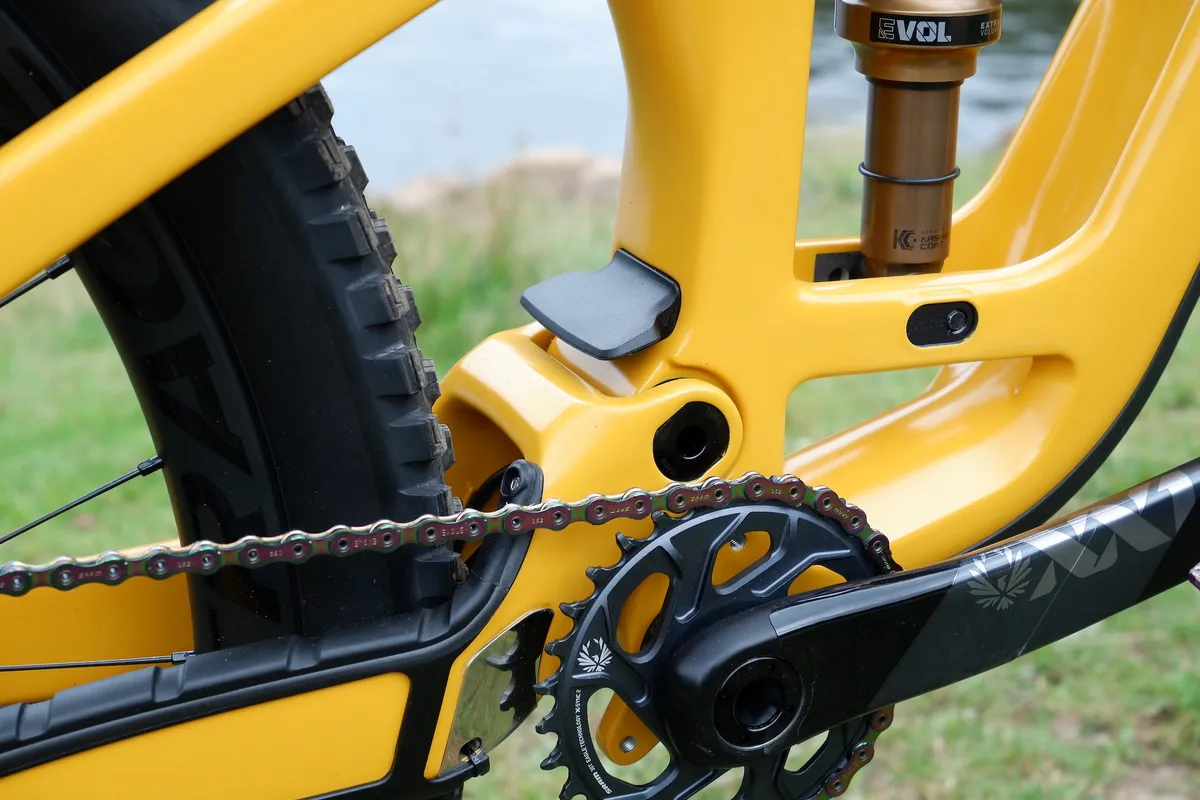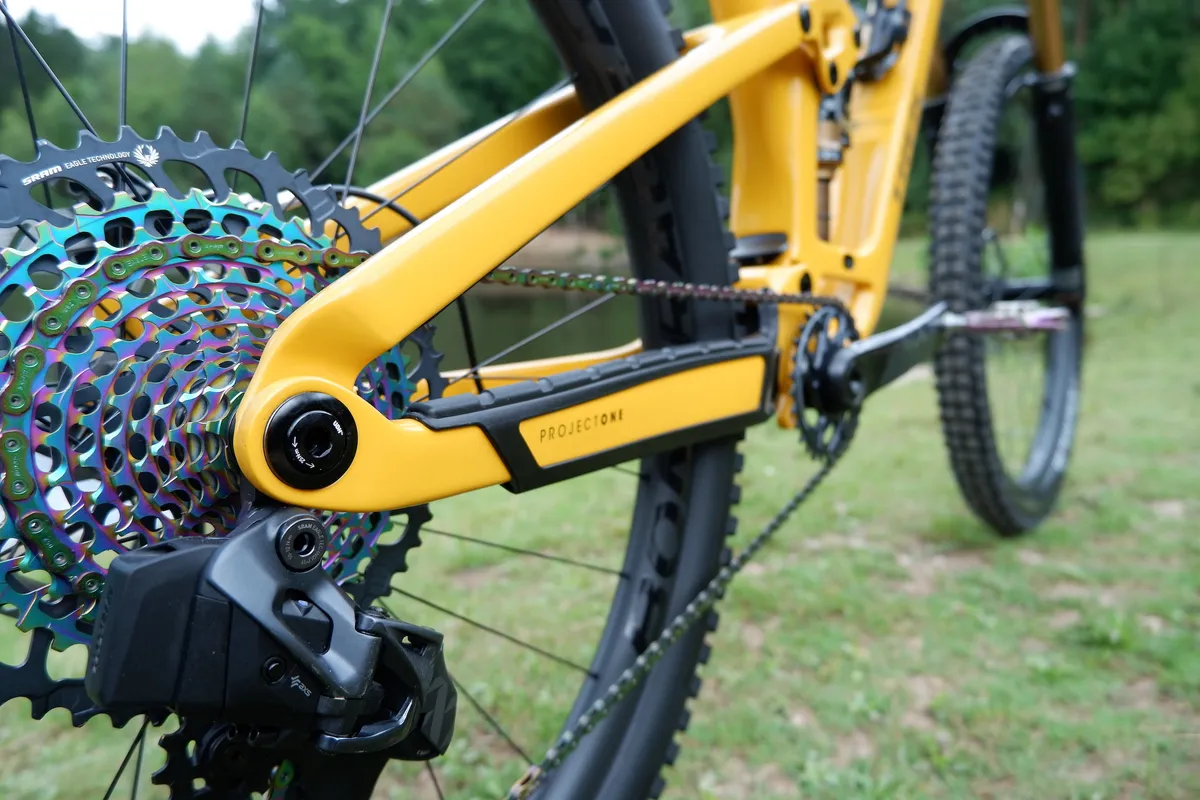Trek has launched its updated Fuel EX trail bike, taking it from a lighter-weight, short-travel ripper and turning it into a more aggressive trail bike in the process.
The Fuel EX receives 140mm of travel at the back, paired with a 150mm fork, and features adjustable geometry and the ability to run a coil shock.
The new-shape bike takes clear aesthetic influences from Trek's also new Fuel EXe eMTB that was launched this summer. Moderately curved top tubes and a lower shock mounting point on a bar linking the down tube to the seat tube, above the bottom bracket area, are the clearest visual links between the models.
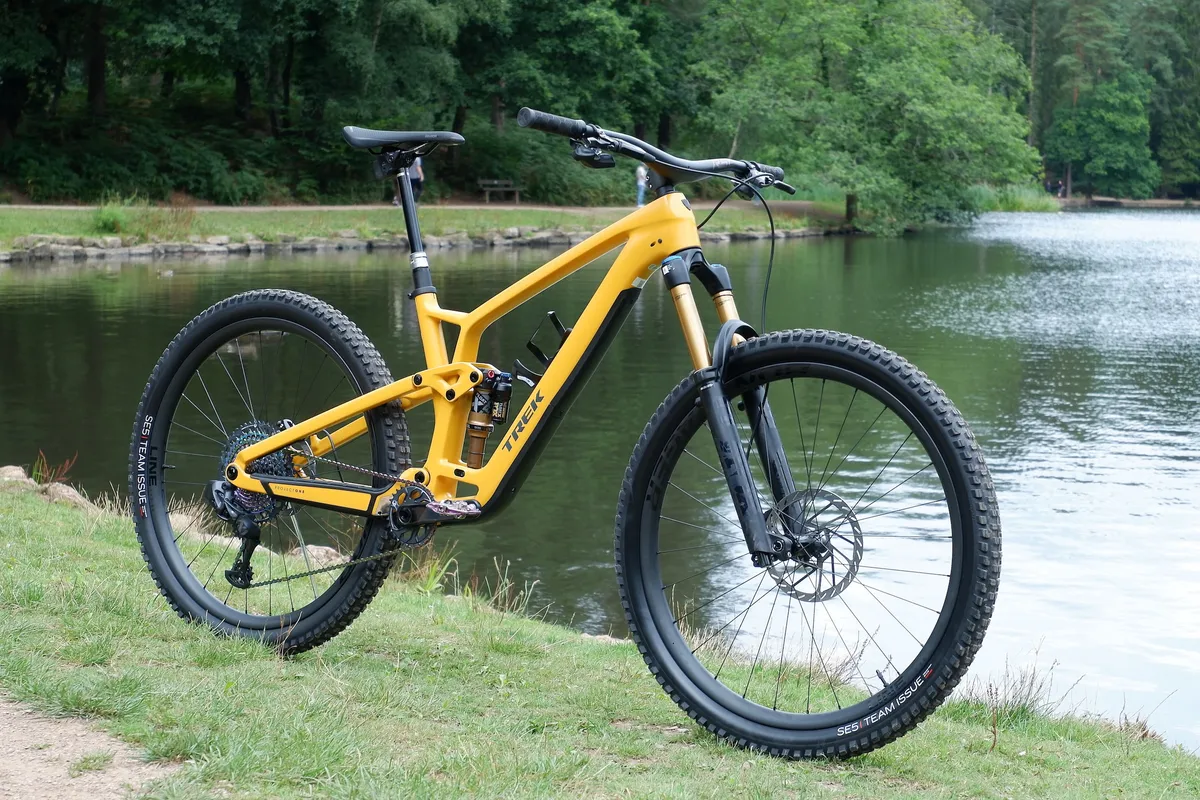
Trek claims the trail category is the most important part of its mountain bike family, and so the Fuel EX is the key bike in the range.
As such, this is a bike Trek wants to excel in all conditions, and appeal to a wide range of riders. It has to climb well and descend confidently, as well as being heaps of fun. Trek claims it's the most feature-full bike it has ever made.
The bike uses the brand's ABP suspension linkage, and in the smaller sizes is offered with 27.5in wheels.
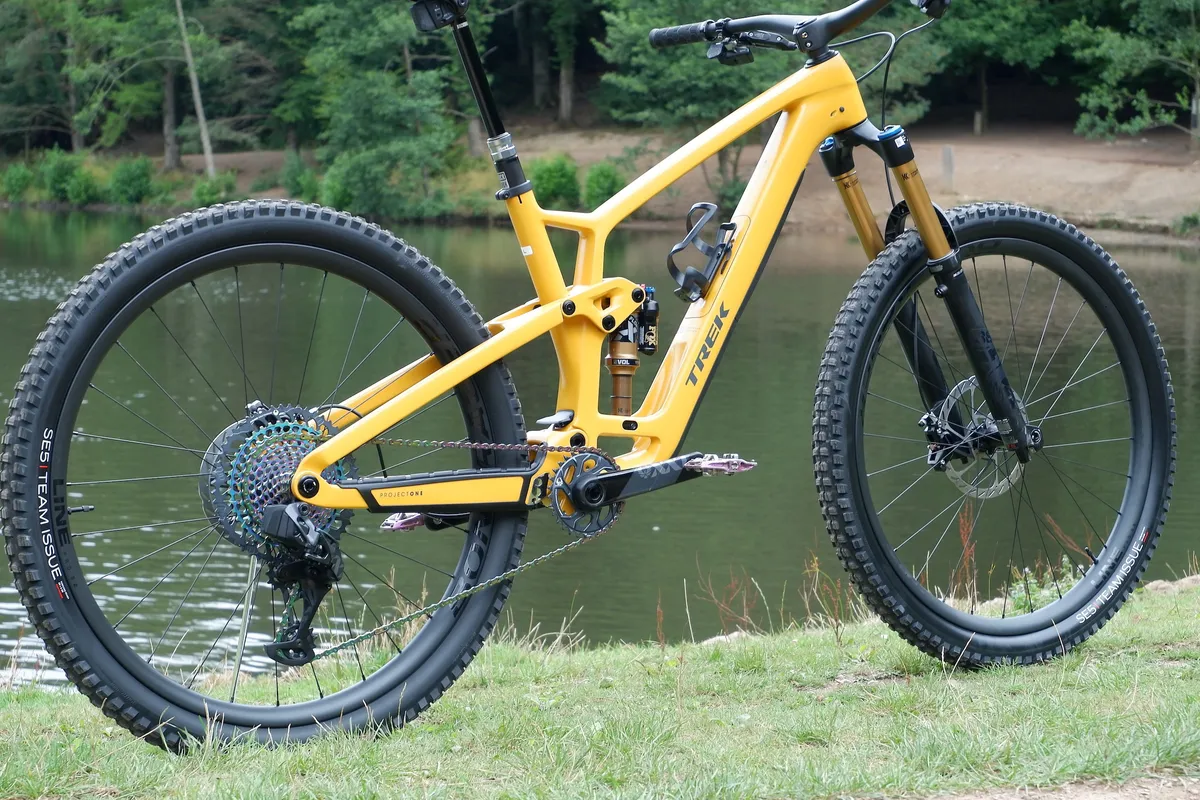
Trek Fuel EX frame details
Trek is offering the new Fuel EX in both aluminium and carbon options, which share the same geometry and suspension headline figures.
The shape of the frame has had to change on this version of the bike to enable Trek to achieve a number of its goals.
For example, it wanted a shorter seat tube length, to allow for longer-drop droppers, but needed to balance this with a longer seatpost insertion length to allow for these longer posts.
This means the shock has been moved forward in the frame to accommodate the new seat tube. However, Trek says it didn't want to compromise water bottle storage or standover height.

Trek also needed to ensure a broad range of shock sizes could fit – including coil and piggy-back shocks. Trek says this means all of Fox and RockShox's air and coil shocks can fit in, as well as the likes of DVO/Push/Marzocchi.
On some smaller frames with water bottles, there may be compatibility issues with large-architecture shocks.
Trek is using the 34.9mm seat tube diameter standard, allowing for more reliable long-drop droppers. This larger diameter allows for stiffer dropper post construction, and means seals are more effective too.
The Fuel EX features down tube storage on both carbon and alloy models, with the door located under the bottle cage.
There's also fully guided internal cable routing – a first for the Fuel EX, enabling you to push cables in at the head tube, and wait for them to exit at the right place without fishing around internally to guide them.
Like the Trek Slash and Session, the down tube has full-length rubberised bolt-on protection. This extends high up the down tube for riders who sling their bikes over a pickup's tailgate.
Trek Fuel EX suspension details
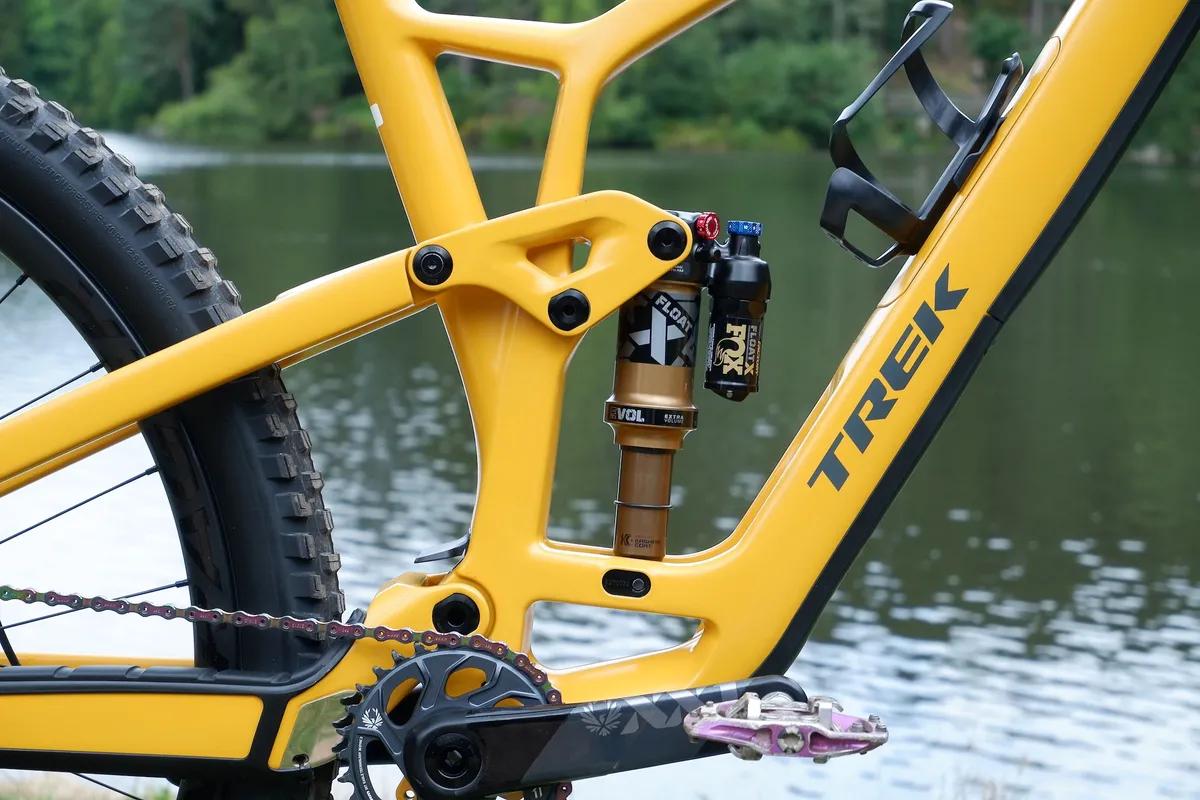
Trek's ABP suspension linkage features a rear pivot concentric to the rear axle (rather than close to it on the chainstay, as per a 4-bar, or on the seatstay in a linkage driven single-pivot design).
This is said to avoid the suspension stiffening up under braking. It's a system that has reviewed well on a range of Trek mountain bikes.
Trek has added a 'Progression Chip' to its ABP suspension system, which alters the leverage rate of the suspension.
Effectively, this allows both air (progressive in nature) and coil (linear in nature) shocks to be used. However, Trek says the chip can also be used to alter the way your bike feels with the same shock.
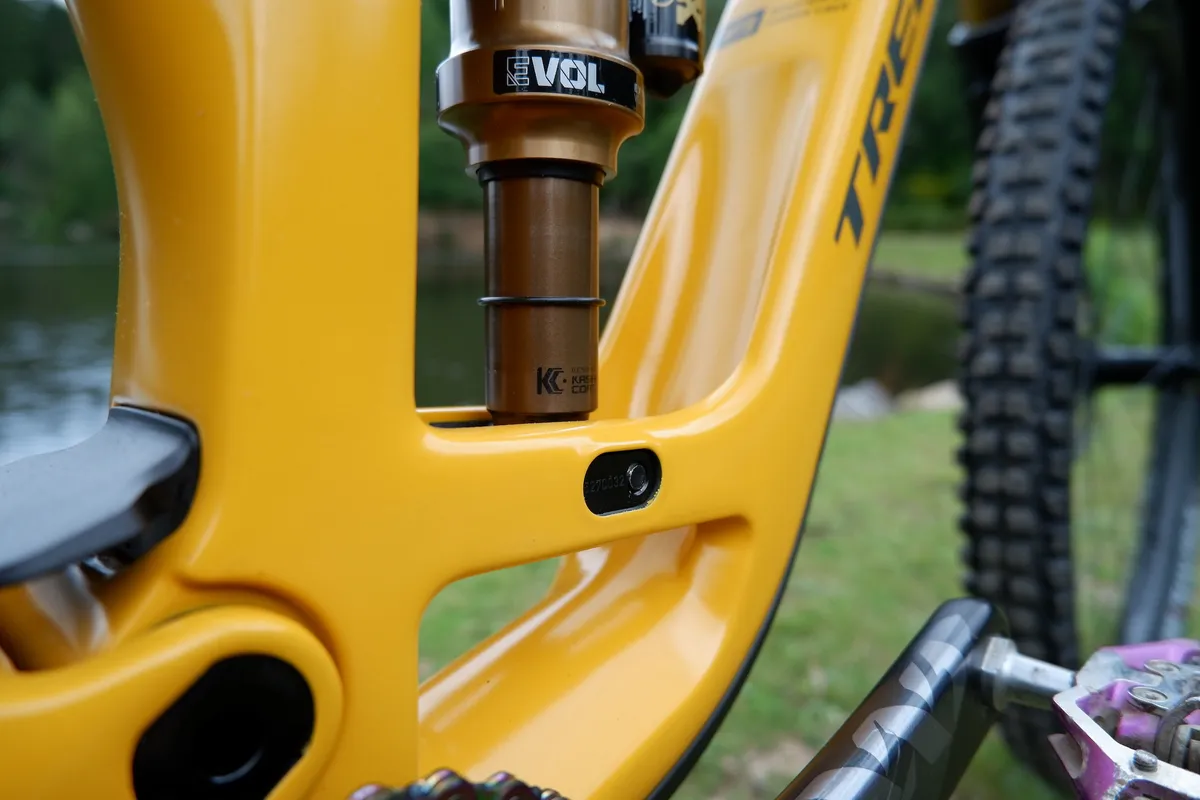
In the less progressive setting, it's designed to act like previous generations of the Fuel EX. It should cope well with rocky, lumpy trails with big hits, where you want to easily and reliably access all the bike's travel.
In the higher-rate setting, you get more progression and more bottom-out resistance, which Trek says is ideal on more flowy trails, where you want the bike held up higher in its travel, and to provide more pop when you hit a jump.
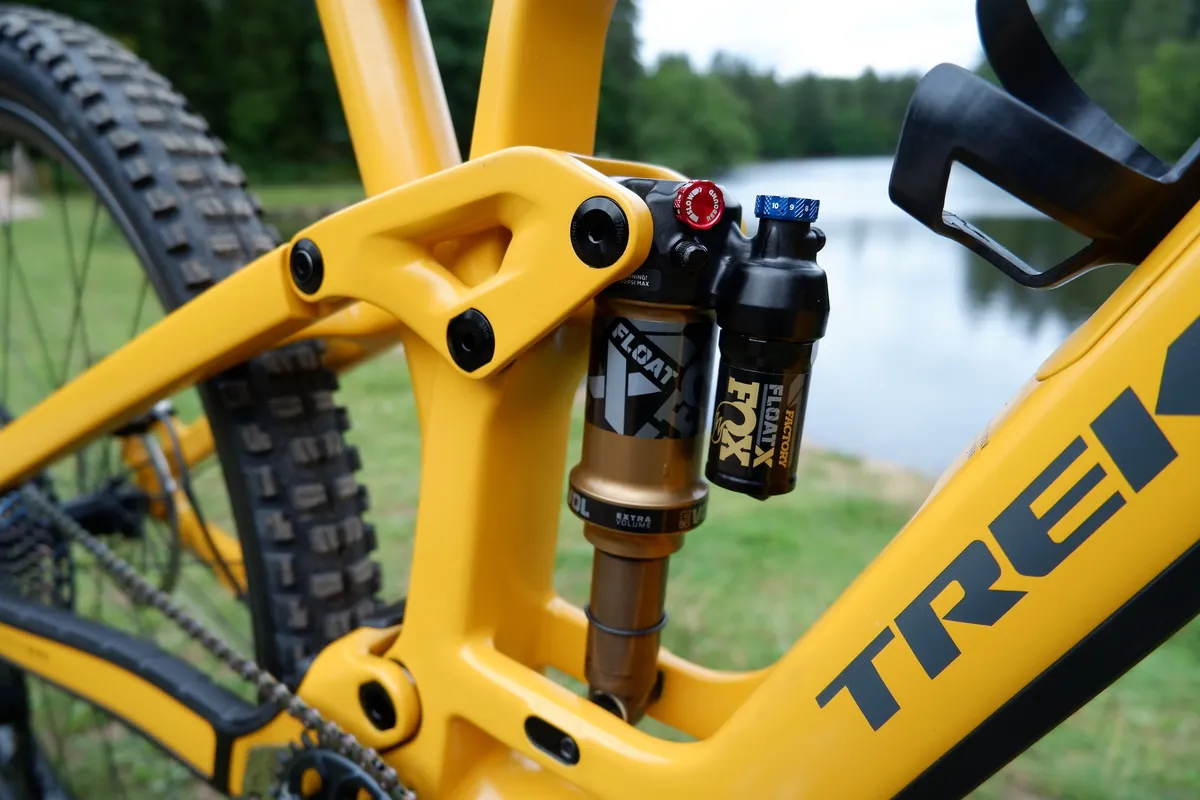
This is a step up from changing the spring rate of the suspension, because the leverage rate impacts on the damping of the shock as well. This is trickle-down tech from Trek's Session DH bike.
Trek Fuel EX geometry
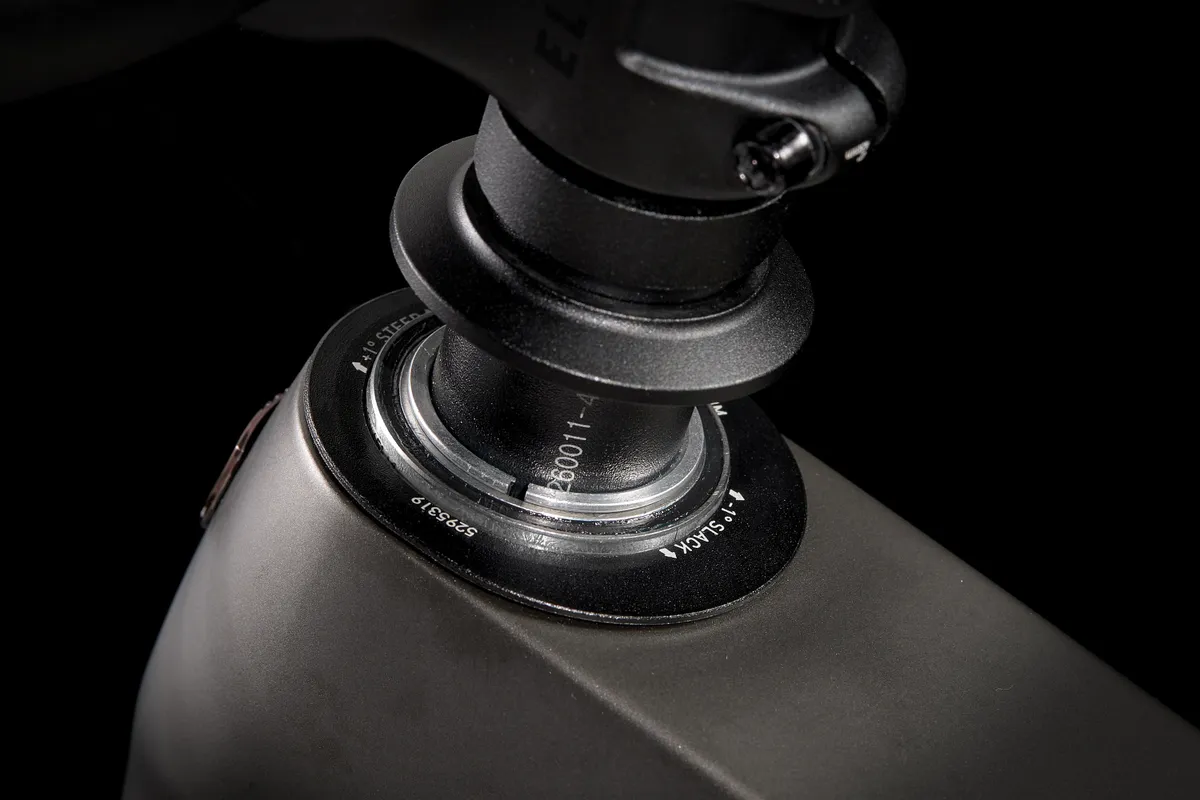
Bikes are now, as you'd expect, longer, lower, slacker and steeper. This means the head angle has been chopped to 64.5 degrees, the reach has gone up 10 to 20mm depending on size, and the seat angle has been steepened too.
Chainstays are size-specific, from 435 to 450mm depending on frame size. This has been done to keep a more consistent weight balance across the eight sizes (XS to XXL).
The XS bike is 27.5in only, while size-small bikes can be purchased in either 29in or 27.5in. The rest of the range is 29in.
Trek has built the Fuel EX with both the Mino Link Hi/Low flip chip and an adjustable headset system with three positions – Steep, Neutral and Slack.
On its own, this gives six geometry options. However, it also indicates the bike can be run as a mullet, in M to XXL sizes.
When run as a mullet, Trek says the Mino Link should be run in the high setting, and a longer 160mm fork should be used.
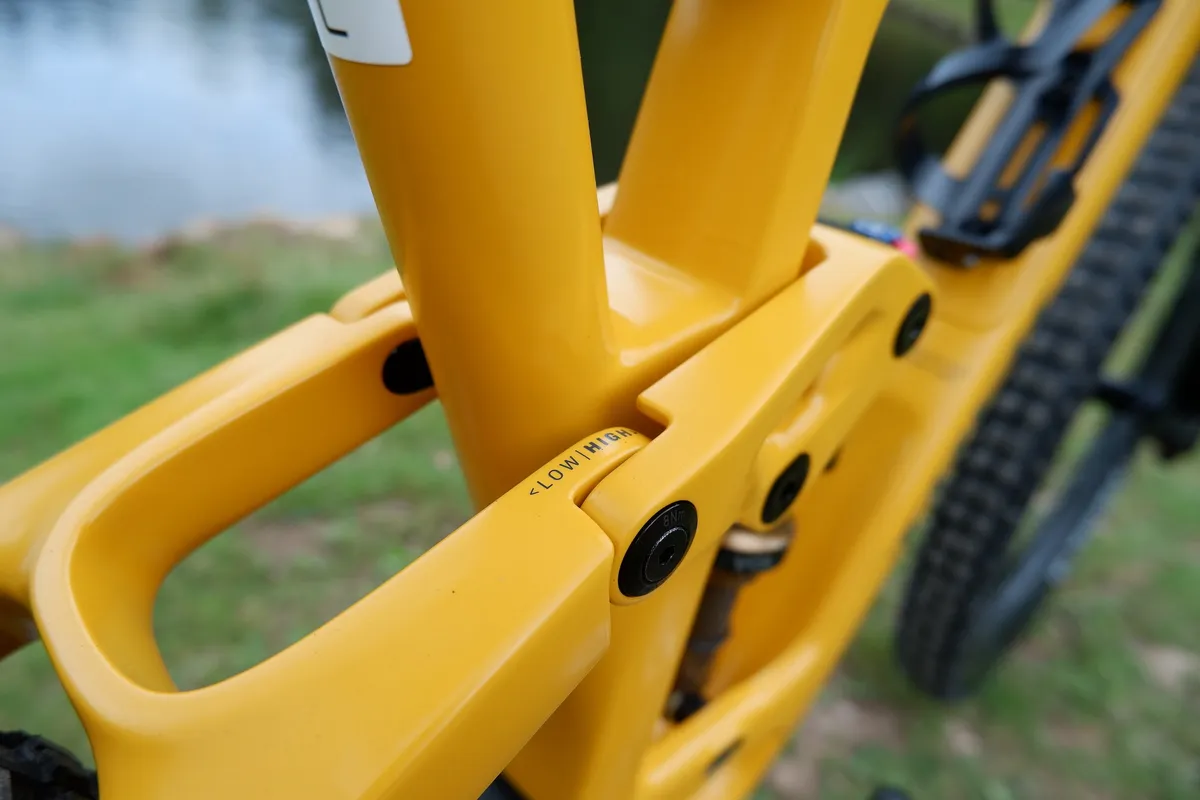
The current Hi setting on the Mino Link is the same as the previous generation's Low setting.
Below is a 29in, Mino Link Low, headset Slack geometry chart. Trek's website has a dynamic geometry chart, which updates when you digitally alter the settings on the bike.
| | Wheelsize | Seat tube Length | Reach | Stack | Effective top tube | Measured top tube | Chainstay Length | Head tube angle | Head tube length | Effective seat tube angle | Bottom bracket drop | Bottom bracket height | Wheelbase | Front Center | ||
|---|---|---|---|---|---|---|---|---|---|---|---|---|---|---|---|---|
| Extra Small | 27.5 | 360 | 402.6 | 572.4 | 515.8 | 509.2 | 435.0 | 63.5 | 95 | 78.8 | 27.0 | 330.5 | 1,152.8 | 719.2 | ||
| Small | 27.5 | 380 | 432.5 | 572.3 | 550.1 | 539.1 | 435.0 | 63.5 | 95 | 78.4 | 26.9 | 330.6 | 1,182.8 | 749.1 | ||
| Small | 29 | 380 | 427.8 | 610.6 | 553.4 | 547.4 | 435.0 | 63.5 | 95 | 78.8 | 40.0 | 333.5 | 1,194.4 | 757.2 | ||
| Medium | 29 | 410 | 452.7 | 615.0 | 583.6 | 574.0 | 435.0 | 63.5 | 100 | 78.4 | 39.9 | 333.6 | 1,221.5 | 784.4 | ||
| Medium/Large | 29 | 420 | 472.7 | 614.9 | 606.9 | 594.0 | 440.0 | 63.5 | 100 | 77.7 | 39.9 | 333.6 | 1,241.5 | 804.3 | ||
| Large | 29 | 435 | 487.7 | 619.4 | 626.3 | 610.5 | 440.0 | 63.5 | 105 | 77.4 | 39.9 | 333.6 | 1,258.7 | 821.5 | ||
| Extra Large | 29 | 470 | 517.7 | 632.9 | 661.2 | 645.2 | 445.0 | 63.5 | 120 | 76.8 | 39.8 | 333.7 | 1,295.2 | 857.9 | ||
| XX-Large | 29 | 500 | 547.7 | 646.4 | 695.9 | 679.9 | 450.0 | 63.5 | 135 | 76.2 | 39.8 | 333.7 | 1,331.6 | 894.3 |
Trek Fuel EX models
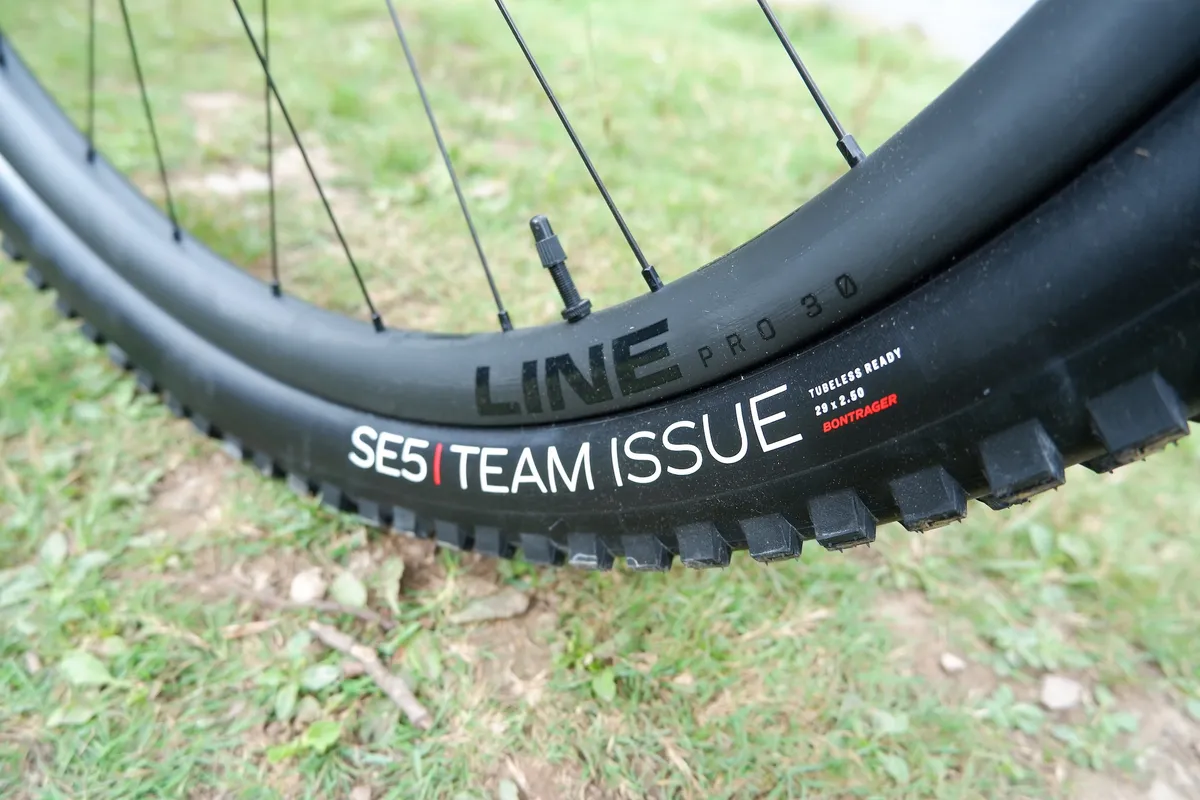
The model line starts with the Fuel EX 5, which uses the previous-generation frame.
The new chassis lands on models EX 7 and up. Trek will also be offering both the carbon and alloy frame as a frame-only option for those who wish to spec their own bikes.
All bikes feature largely Bontrager finishing kit, including dropper posts. At the time of writing, we do not have pricing.
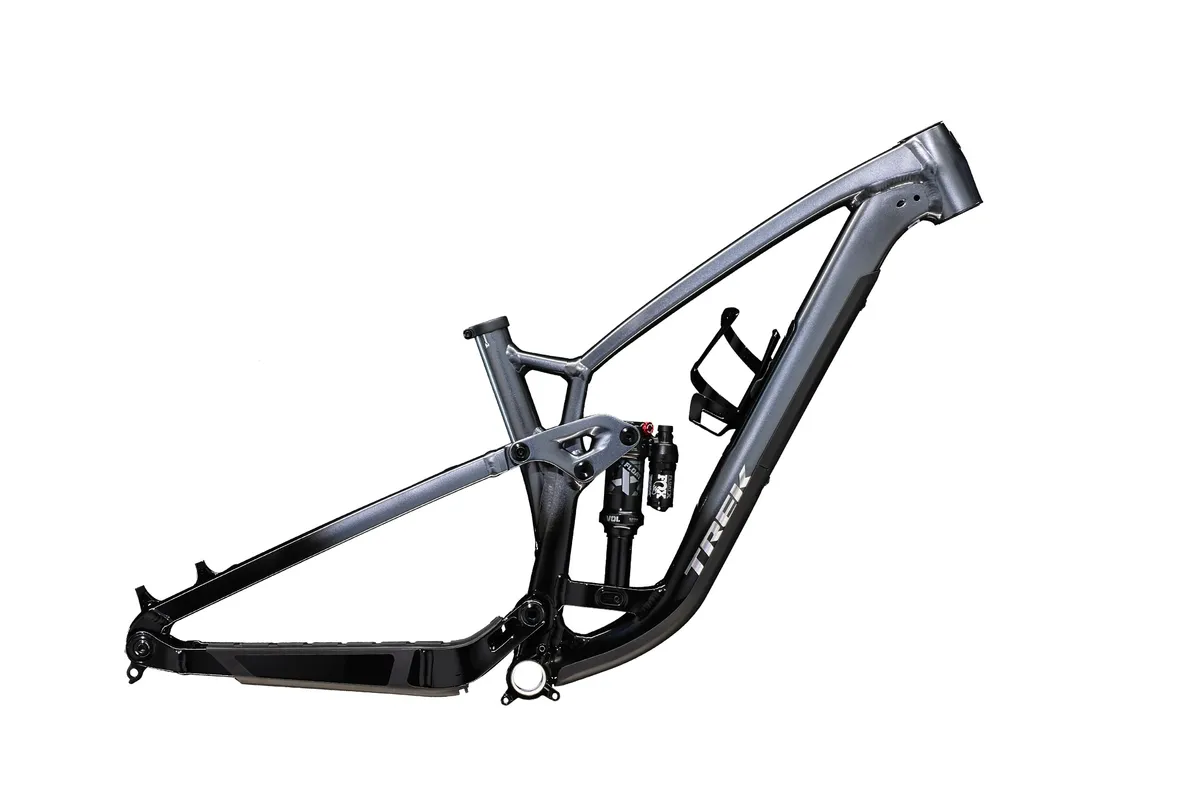
Trek Fuel EX 5 specification
- Frame: Alpha Platinum
- Fork: RockShox Recon Silver
- Shock: X-Fusion Pro 2
- Groupset: Shimano Deore
- Brakes: Shimano MT200
- Wheels: Alex rims, Bontrager hubs
- Tyres: Maxxis Rekon
Trek Fuel EX 7 specification
- Frame: Alpha Platinum
- Fork: RockShox 35 Gold RL
- Shock: Fox Performance Float
- Groupset: Shimano Deore/SLX/XT
- Brakes: Shimano MT420
- Wheels: Bontrager Line Comp 30
- Tyres: Bontrager XR5 29x2.6in
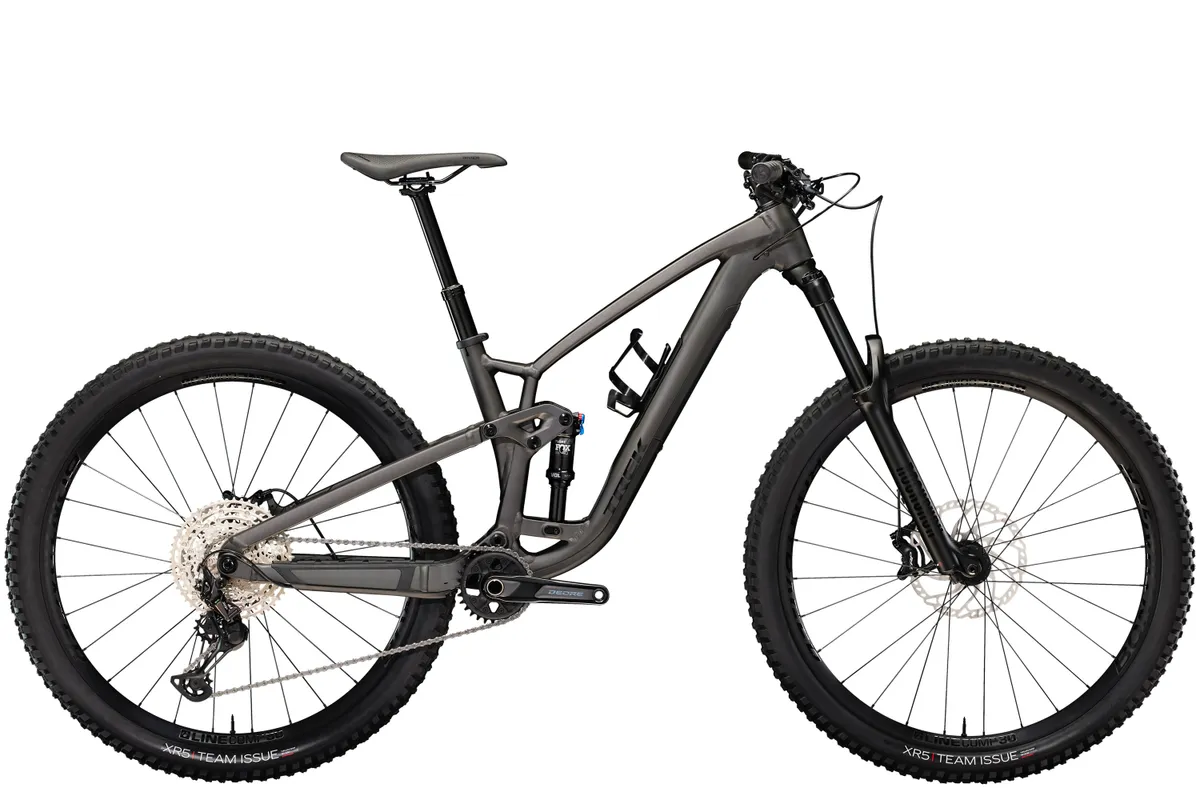
Trek Fuel EX 8 specification
- Frame: Alpha Platinum
- Fork: Fox Rhythm 36
- Shock: Fox Float X2 Performance
- Groupset: Shimano SLX/XT
- Brakes: Shimano MT6120
- Wheels: Bontrager Line Comp 30
- Tyres: Bontrager XR5 29x2.6in
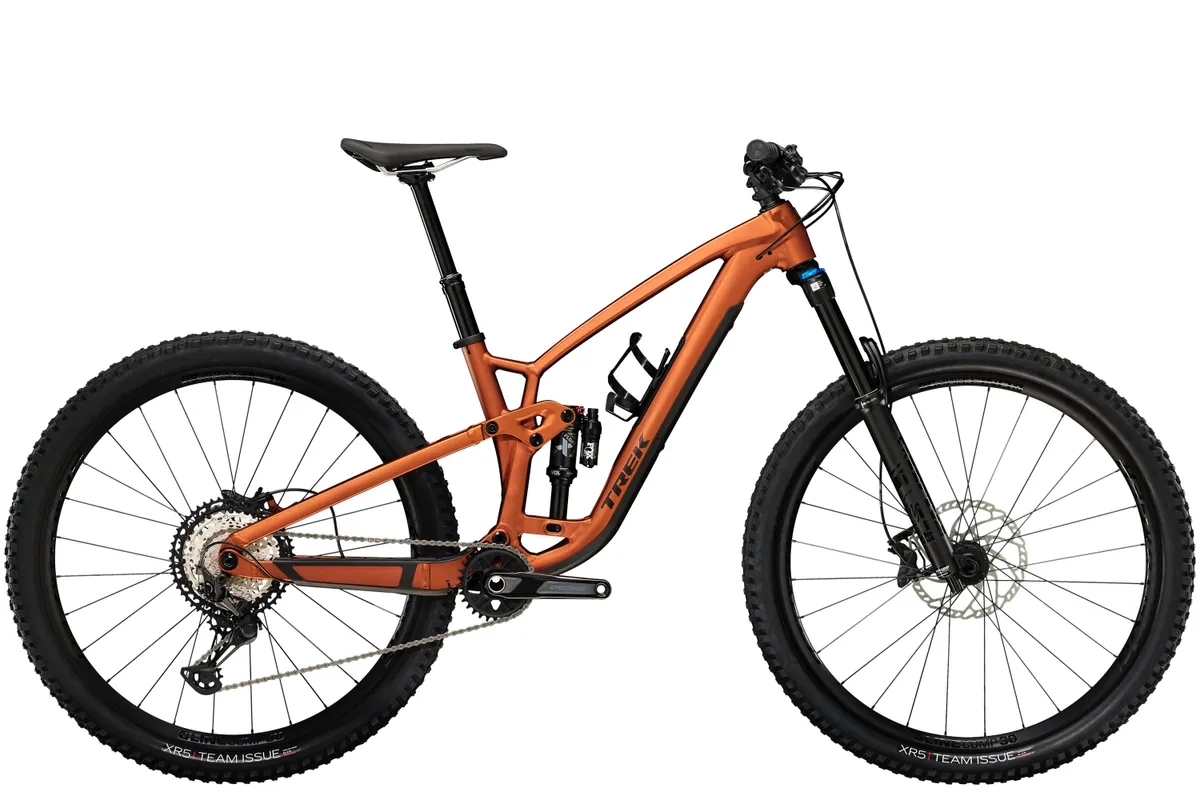
Trek Fuel EX 9.7 specification
- Frame: OCLV Carbon
- Fork: Fox Rhythm 36
- Shock: Fox Float X2 Performance
- Groupset: Shimano SLX/XT
- Brakes: Shimano MT6120
- Wheels: Bontrager Line Comp 30
- Tyres: Bontrager XR5 29x2.6in
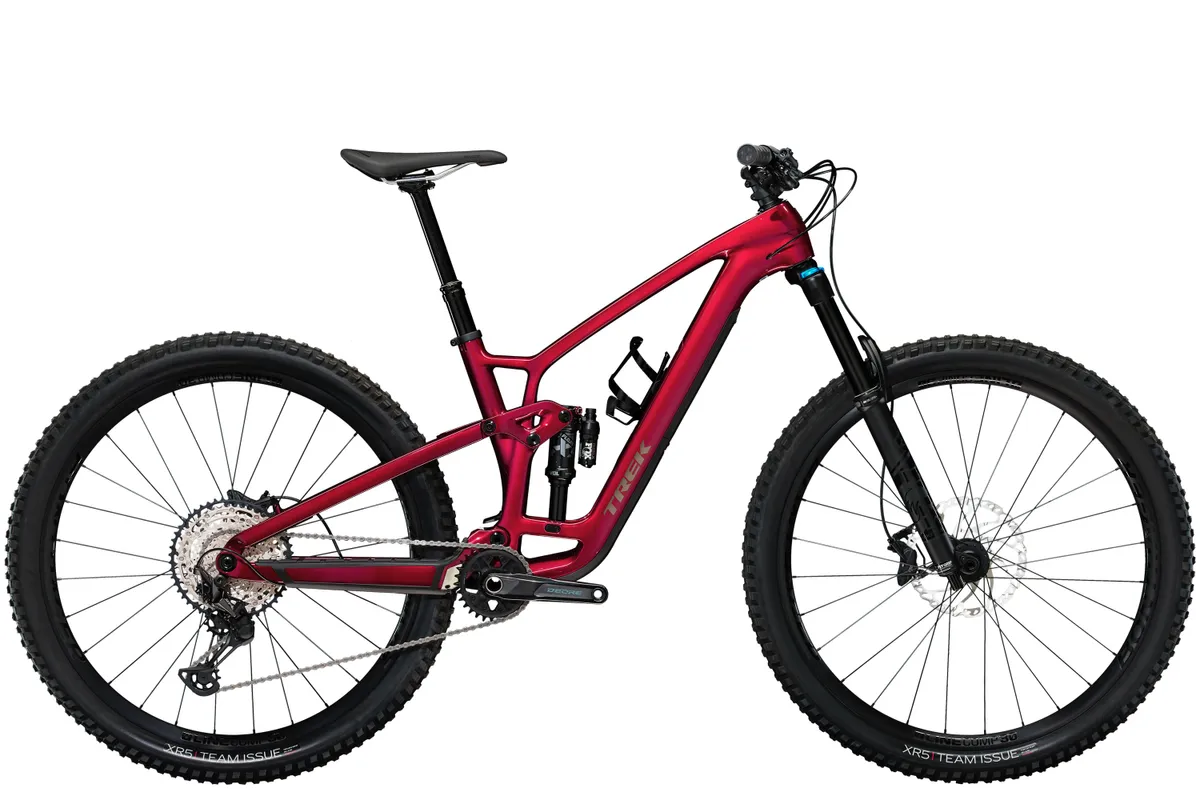
Trek Fuel EX 9.8 GX AXS / Shimano XT specification
- Frame: OCLV Carbon
- Fork: Fox Performance 36
- Shock: Fox Float X2 Performance
- Groupset: SRAM GX AXS or Shimano XT
- Brakes: SRAM Code R or MT8120
- Wheels: Bontrager Line Elite 30 Carbon
- Tyres: Bontrager XR5 29x2.6in
Trek Fuel EX 9.9 XX1 AXS / Shimano XTR specification
- Frame: OCLV Carbon
- Fork: Fox Factory 36
- Shock: Fox Float X2 Factory
- Groupset: SRAM XX1 AXS or Shimano XTR
- Brakes: SRAM Code RSC or MT9120
- Wheels: Bontrager Line Pro 30 Carbon
- Tyres: Bontrager XR5 29x2.6in


